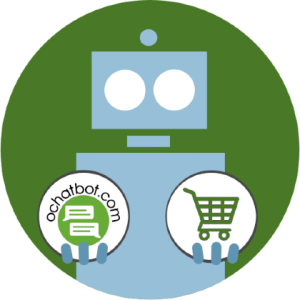Image by Lukas on pexels.com
There’s never been a better time to get into marketing. There are numerous platforms to explore and advertise on. Plus, the sheer number of both free and paid tools will be enough to overwhelm anyone who’s just starting in the industry.
The competition is intense too. Nowadays, marketers are expected to know the basics but also be able to unleash their creativity.
However, creativity alone isn’t enough. One also needs to be both ingenious and innovative to deliver desired results to clients. The concept of a successful marketing campaign today is also very different from what it was a decade ago.
Nonetheless, having a pulse on the latest marketing trends is crucial. Doing so helps keep your solutions top of mind for your existing customers while consistently feeding new prospects into your sales pipeline.
Why Pay Attention to Trends
The world of marketing moves at lightning speed. World-altering events like the COVID-19 pandemic have encouraged marketers to focus more on digital transformation. In 2020, they had to constantly adapt to shifting virtual and hybrid business landscapes. But as the world is starting to open up, things appear to take a negative turn.
According to a study conducted by Blogspot, some businesses saw slumps in the virtual engagement and online traffic they’d recently relied on.
Marketing trends are constantly changing and evolving, so keeping up with new technology can be challenging. Regardless of skill level, marketers should know this and do their best to keep up. Better yet, they must stay ahead of trends to maintain a sense of relevance with their audience.

Image by Anna Shvets on pexels.com
Marketing Trends to Watch Out For
In this post, we’re putting the spotlight on four of the best marketing strategies in 2024 and beyond. Whether you’re a freelance digital marketing specialist or affiliated with an agency specializing in paid ads, you will be able to learn how each of these trends can be incorporated into your online advertising initiatives.
1. Video marketers will keep content short
As mentioned previously, marketers can leverage a number of effective trends to succeed in their marketing campaigns. Surveys have found that, among these trends, short-form content is the second most used one.
Another Blogspot survey found that over 31 percent of global marketers are investing in short-form video content. Of this, 46 percent see using videos as an effective strategy in terms of performance and engagement.
Short-form videos actually worked better than long-form videos.
Long-form videos can offer audiences depth and large amounts of information about a product, brand, or service. However, many B2C and B2B marketers prefer short-form videos because they require less bandwidth and are much more effective.
Furthermore, this type of format aligns well with the fast-paced attention spans of online audiences in various demographics. This is why platforms like TikTok and Snapchat have gained rapid growth and marketing interest.
2. Experiential Marketing Could Make a Comeback
The defining feature of an experimental marketing campaign is the immersive experience it offers customers. It is the type of campaign where Augmented Reality or Virtual Reality (AR/VR) is involved. These worlds stand in for a physical place of space, allowing audiences to explore—sometimes without having to leave the comfort of home.
Running experiential marketing campaigns became difficult in 2020 and 2021 due to the closure of many business establishments and public venues.
A branded AR/VR experience is also more expensive. It’s also not easily accessible because special headsets or the latest smartphone technology are needed to enjoy immersive experiences. So it’s not surprising that fewer brands have invested in digital experiential marketing.
Fortunately, things are looking up. Public areas are beginning to reopen. Also, more and more people can access digitally immersive platforms. Global marketers are putting the possibility of experiential marketing back on the table again for 2024.
We could be seeing more of these fun, effective, and highly shareable experimental campaigns today and in the future.

Generative and Scripted AI to engage shoppers in conversational eCommerce.
Create happy customers while growing your business!
-
1 out of 4 shoppers make a purchase on average*
-
5% to 35% Increase in AOV*
-
25% to 45% Reduction in Support Tickets
WE GUARANTEE RESULTS!
3. Continued digital transformation
In the marketing world, continued digital transformation refers to the ability of companies to adapt to digital-driven consumer trends. They modify their business models, internal structures, and products to accommodate what’s popular with their intended audience. They
leverage new technology to optimize their marketing efforts and improve customer experience.
How does digital transformation apply to marketing initiatives per se? It’s when businesses change their marketing mix. They distance themselves from traditional advertising media and move toward more digital channels. An example would be moving away from print advertising to social media.
Continuous digital transformation in marketing is effective for several reasons. It powers more data-driven campaigns and optimization, leading to higher conversions, lower ad spend, and greater ROI—something that’s nearly impossible with traditional advertising.
Amazon’s Alexa is a great real-world example of successful customer-focused digital transformation.
If you want to order your favorite brand of instant coffee, you simply tell Alexa, “order my favorite coffee,” and Amazon, through artificial intelligence-powered voice search, will take care of the rest. This process is collectively known as “headless commerce.”
You don’t need to be a big brand like Amazon to implement continued digital transformation. In smaller businesses, marketers have a wide range of tools at their disposal to continue digital transformation in their brands, like Google Analytics, A/B testing, AI chatbots and customer data platforms (CDP).
4. Highly personalized content experience
Personalized content experience is all about tailoring content to each user or audience.
Think of how Netflix recommends movies and TV shows according to a person’s viewing history or how Spotify allows app users to curate and create their playlists.
These are just some examples of how well-known brands personalize content to pull in more users to their respective platforms successfully.
Highly personalized content started to trend right after the pandemic. With most people confined to their homes for extended periods, many have adapted to so-called virtual living.
Experts believe society has become almost “immune” due to the 2020 lockdowns. They tend to get frustrated by content that seemingly has nothing to do with their interests.
That said, brands that personalize content for their customers can stand out. They can find and speak to their target audience in a way that appeals to them.
Businesses need to be proactive when it comes to providing highly personalized content. They need to collect consumer data and implement strong data analysis. They should look into investing in AI technology and CRM platforms. By personalizing content, brands build stronger relationships with their audience, which helps drive engagement and conversions.
Conclusion
These days, there are many different channels a brand can use to reach its target audiences. Marketers too have the option to employ various innovative tactics to get ahead of the competition and craft successful online advertising campaigns.
Being updated on the latest trends lets global marketing professionals make informed decisions on which techniques would suit their clients’ brands the best. Small business owners could also benefit from them if they research and find ways to adapt top trends for their marketing needs.
A successful marketing campaign depends on knowing where to build a presence and how to appear there.
- 6 Proven Use Cases of eCommerce Chatbots For More Productivity - December 6, 2022
- 8 Steps to Create a Secure eCommerce Website - October 25, 2022
- 11 Best Chatbot Platforms You Should Check Out for eCommerce - October 11, 2022


